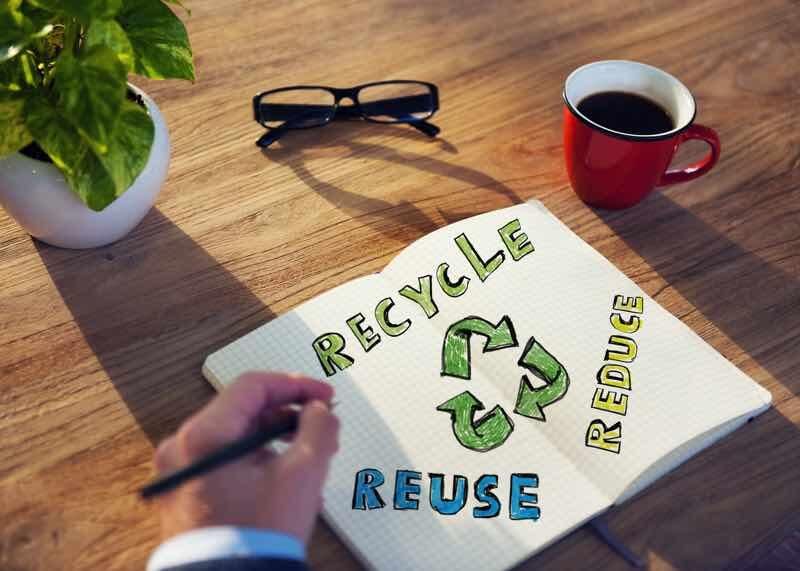
Introduction
Businesses are becoming more conscious of their environmental effect in today’s quickly changing world. Sustainable practices have become more important in various businesses, including printing. The printing sector, which has historically been linked with high resource consumption and waste output, is increasingly adopting eco-friendly choices to reduce its environmental imprint. As customer demand for eco-friendly packaging, goods, and services grows, so does the desire for businesses to adopt eco-friendly printing practices. This article will investigate sustainable printing practices and offer eco-friendly solutions for firms to implement into their operations.
1.Digital printing
Digital printing is a sustainable and economical printing option that offers several advantages over traditional methods. Unlike traditional printing, digital printing does not require a printing plate, reducing waste significantly.
In digital printing, the ink is applied directly to the surface of the substrate, eliminating the need for a plate. This streamlined process generates less waste compared to traditional methods that rely on plates. As a result, digital printing is considered an eco-friendly practice, contributing to reduced environmental impact. In addition to its sustainability benefits, digital printing is particularly suitable for smaller print runs. With no plate setup required, the printing process can be initiated quickly and efficiently. Digital printers have the capability to produce thousands of sheets per hour, making it a highly efficient and cost-effective option for businesses.
2.Eco-Friendly Inks and Toners
Printing inks and toners have traditionally contained hazardous chemicals that contribute to air and water pollution. However, environmentally friendly solutions have arisen to solve these problems. Vegetable-based inks, which are generated from sustainable resources such as soy, maize, or linseed oil, are gaining popularity. These inks are biodegradable, release less volatile organic compounds (VOCs), and have a reduced carbon footprint than petroleum-based rivals. Furthermore, remanufactured or refilled ink cartridges are a more ecological solution, eliminating waste and preserving resources.
3.Recycled Paper
Using recycled paper is a good way to lessen the environmental impact of printing. Paper that has been recycled is created from post-consumer waste or recovered fibers from the printing and packaging industries. Businesses that utilize recycled paper minimize their demand for virgin fibers, preserve water, reduce energy use, and lessen greenhouse gas emissions. To confirm the validity of the paper, check for certificates such as the Forest Stewardship Council (FSC) or Programme for the Endorsement of Forest Certification (PEFC).
4.Efficient Printing Practices
Implementing efficient printing practices is another vital step toward sustainability. By optimizing print settings, such as double-sided printing and using draft mode for internal documents, businesses can significantly reduce paper consumption. Additionally, encouraging employees to review documents digitally and print only when necessary can help minimize waste. Investing in energy-efficient printers and implementing automatic power-saving features can further reduce energy consumption.
5.LED UV Printing
LED UV printing, also known as Light Emitting Diode Ultraviolet printing, is an excellent technology for producing brochures, booklets, pamphlets, and promotional products. This process improves color vibrancy and assures crisper graphics by utilizing UV light for speedy drying, creating a lasting imprint.
LED UV printing is an extraordinarily eco-friendly printing process when it comes to environmental sustainability. For starters, it uses far less energy than typical print-drying systems. Furthermore, its rapid on/off capability decreases standby energy consumption between jobs, resulting in lower total CO2 emissions. Furthermore, because of the quick drying process, no anti-set-off powder spray or sealing coat is required. This removes the need for extra chemicals, lowering the environmental effect of standard printing procedures even further.
6.Print-on-Demand Services
Print-on-Demand (POD) services provide an environmentally friendly alternative for businesses involved in publishing, marketing materials, or product packaging. POD allows for the production of items only when there is a demand, reducing excess inventory and minimizing waste. This approach reduces the need for large print runs, conserves resources, and lowers carbon emissions associated with transportation and storage.
7.Responsible Disposal and Recycling
Proper disposal and recycling of printing materials are essential for maintaining sustainable practices. Recycling paper, ink cartridges, and toners ensure that valuable resources are recovered and reused. Many printer manufacturers and third-party organizations offer recycling programs specifically designed for these materials. By participating in such programs, businesses can contribute to a circular economy and reduce waste sent to landfills.
8.Promoting Awareness and Education
Educating employees and stakeholders about sustainable printing practices is crucial for fostering a culture of environmental responsibility within an organization. Awareness campaigns, workshops, and training sessions can help employees understand the importance of sustainable printing, encourage them to adopt eco-friendly practices and drive positive change. Additionally, businesses can promote their sustainable initiatives to clients and customers, highlighting their commitment to the environment and encouraging others to follow suit.
9.Uncoated Paper
Uncoated paper is a novel printing technology that produces outstanding results on the LED UV printer. While it produces a beautiful end effect, its natural feel makes it one of the most easily recycled materials. What exactly does this mean? Uncoated paper is a very fibrous substance that is less in weight than coated paper. As a result, it is commonly accepted for recycling by various mills and is easy to transport. How can you confirm that your print supplier is adopting the most environmentally friendly practices as someone in need of professional print services? The first step is to utilize our Sustainable Printing Checklist.
Conclusion
Adopting sustainable printing practices is a significant step towards reducing the environmental impact of businesses. By implementing eco-friendly options such as digital transformation, using eco-friendly inks and toners, choosing recycled paper, optimizing printing practices, utilizing print-on-demand services, ensuring responsible disposal and recycling, and promoting awareness, businesses can make a positive contribution to the planet. Embracing these sustainable printing practices not only benefits the environment but also enhances brand reputation, reduces costs, and positions businesses as responsible corporate citizens in the eyes of their stakeholders. Let us strive for a greener future by adopting eco-friendly printing practices today.
